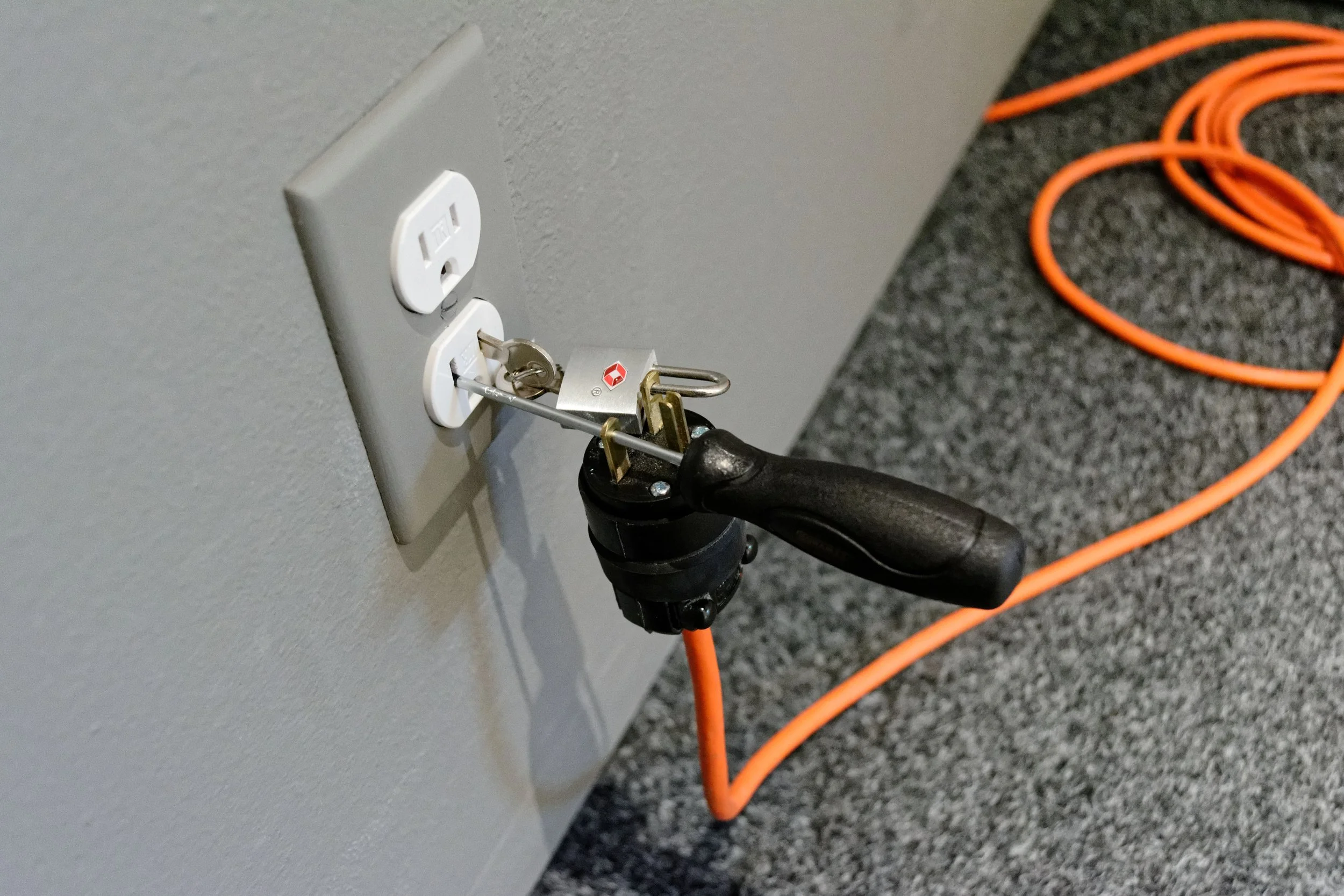REVIEWS
Still standing
— Mojdeh Kamali
Layered complexity and the experience of belonging in a new place
Image of a travel adaptor series from the exhibition Jon Sasaki: Killing One Bird With Half A Stone at the Esker Foundation, 26 September to 5 December, 2020. Image ©Jon Sasaki.
I was walking in the Inglewood neighbourhood in Calgary and thinking to myself, what should I make for my next studio design project at school? How do I design for a space I have never lived in before? The professor's feedback on my design ideas was spinning in my head, three innocent words that always trigger every layer that makes me, me; Keep it simple!
I was pondering the advice of “simple” when I walked into the exhibition Jon Sasaki: Killing One Bird With Half A Stone at the Esker Foundation in November 2020. I stopped in front of an electrical outlet with a plug-in cable that had a tweezer and small scissor jammed into the socket. This work was part of a series of travel adapters that Sasaki had created to explore an improvisation that employing everyday objects in ways that they were not designed for. This work reveals a very complex process for a one simple outcome, like a plug that lights up a house or charges a laptop.
I was curious why it was vital for Sasaki to disassemble the importance of connectivity. I asked him if the pandemic has changed anything for him in terms of thinking about the loss of power and/or the loss of connection. He described the travel adapters as “intentionally not simple.” While one could expect a traveler to use a “safety-certified universal travel adapter” to plug their electronics into a foreign socket, Sasaki described his interest in complicating things. “I was interested in using random stuff found in a hotel room or in a toiletry bag to solve problems that they were not intended to solve.”
I asked Sasaki about the complex layers that have to be put together in order to make a “simple” proper connection. He described his interest in disassembling connectivity,“I love the idea of a world where things go perfectly as planned. Sadly, in my world, systems break down constantly and we often have to use creativity and problem-solving to find ad hoc solutions.”
I remembered again: How should I keep it simple? How can I stay connected to a world I am not considered compatible with? All the layers that have shaped my identity started to recreate a new one to help me survive. The only problem was that my new compatibility was not simple and involved too many risks, but indeed created the simple right answers. Sasaki also believed that there is an element of danger in his art and that’s why he always includes a disclaimer that his “example should NOT be followed!”
I never kept it simple, but I learned to understand why it looked complex. I had to risk plugging into the new culture or new environment to succeed! I think every newcomer gradually learns to find an in-between space by shaking the burnt-out connections to illuminate a new life or identity. As an international student, I resonated with Sasaki’s experiences as a Westerner in a foreign country: “When it came to culture, I only knew my own,” he said as he described his experience on a residency in Kyoto in 2018 where he was searching to connect with a place where his ancestors were from, but that he had not grown up in. The incompatibility of the electrical components became a metaphor for this experience. “The improvised solutions were a way of thinking about bridging those gaps, if only in a temporary, provisional sense. It quickly became clear that I would only ever be able to participate as a tourist, and that was fine with me; tourism has its own kind of appeal.”
I learned through my conversation with Jon Sasaki that he was also thinking about migrants in the process of creating his art. He described how migtating to a new place forces one to adapt, “and for them there is much more at stake,” he says. “The travel adapter series talks about tourists becoming energized, and I hope it also has something to say about the experience a migrant might have, which I suppose might be the struggle to find empowerment.”
I can no longer “keep it simple.” In fact, I never could. I think that’s the beauty of living in an in-between space, a place that has one part of your true self, and the rest is the collection of your risks for a successful connection.
References:
[1] Killing One Bird with Half a Stone Exhibition at the Esker Foundation, Calgary AB 25 September - 5 December, 2020. https://eskerfoundation.com/exhibition/jon-sasaki/.
[2] Elizabeth Diggon, http://www.jonsasaki.com/index.php/work/killing-one-bird-with-half-a-stone/
Mojdeh Kamali is a recent graduate of architecture from the University of Calgary School of Architecture, Planning and Landscape. An intern architect at Dialog, she likes to wander in cities, looking for places where public art might be realized. She participated in the 2021 WriteON workshop series, Amend.


